At the meeting on spraying technique organized by Vertify and Glastuinbow Nederland, Caroline van den Hoek from Syngenta didn't hide the challenges growers are facing when it comes to spraying - especially considering the increasingly fewer options out there.
The event hosted a series of eight workshops focusing on the many facets that make spraying: green products, how to use them, adjuvants, and spraying techniques. For instance, how do you ensure you also properly target the underside of the leaf? And how do you lower emissions?
Before the workshops kicked off, there was a plenary session where Jeroen Sanders did the honors on behalf of Vertify. This was also a special occasion for Jeroen, as he's leaving the commercial world to get into education at Inholland Delft. Kyra Broeders from Glastuinbow Nederland also took the stage to gift him a flower bouquet and wish him good luck with his future endeavors. Then, she proceeded to mainly discuss European politics.
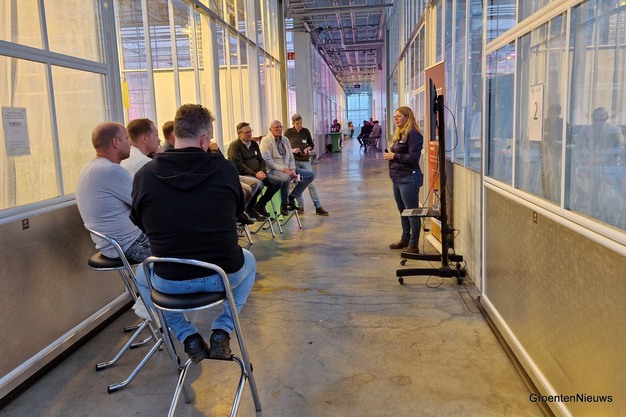
Workshop by Caroline of Syngenta on adjuvants
Green Products
The Policy Specialist for Plant Health of Glastuinbouw Nederland expressed surprise at the decision to withdraw a new crop protection law (the SUR). The left thought the law was too weak, the right too strict, but is the withdrawal of the law good news at all? The reduction of available products continues unabated. The rise of 'green products' needs to accelerate.
In the SUR, there was special attention for green products, but now that the SUR is not proceeding, there's concern that the advancement of green products could also be hindered. Kyra expressed hope that artificial intelligence could help in the transition of crop protection and also pointed out that there was positive news from Europe: the options for breeding with new genetic techniques seem to be genuinely expanding.
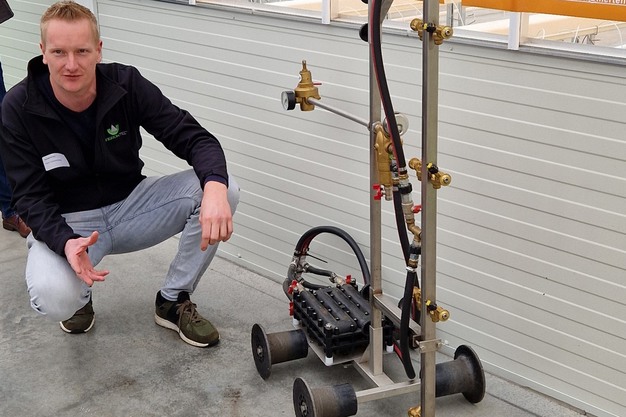
Björn Scharenborg of MagrowTec explains how a magnet package helps to create more uniform droplets for the Growmast
Clean Starting Material
The green products on the market, including the necessary contact agents, require optimized spraying techniques, Liesbeth Nijs of Glastuinbouw Nederland explained in her presentation. The Theme Specialist for Plant Health briefly discussed the Precision Crop Protection pilot, co-funded by Stichting Kennis in je Kas and by the growers in the room.
Part of that pilot was also the monitoring of starting material. Sergio Harinck of Vertify shared results from a sampling started in November. Notably, a high incidence of thrips was found in cyclamen. In some cases, predatory mites were also found, indicating that the growers had already engaged in biological warfare against pests.
The sampling was conducted in cucumber, pepper, and in both lit and unlit tomato cultivation, as well as in various ornamental crops. Sergio advised growers to test the quality of their starting material. In this way, they could see what pests might already be there.
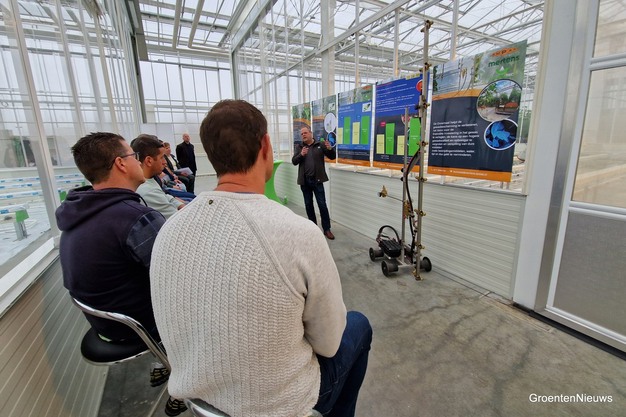
Hans Beerkens of Mertens next to the Growmast
Lure Sugar
Once in the greenhouses of the World Horti Center, Syngenta and Certis Belchim talked about (their) available crop protection products. This also discussed administering lure sugar for spider mites. This allows growers to entice thrips to become active so that, for example, in pepper, the thrips can be drawn out of the flowers at the top of the crop, allowing them to be effectively targeted with a contact agent.
New techniques for spraying were brought by Mertens, Empas, and MagrowTec for their joint presentation. Hans Beerkens of Mertens showcased the Growmast. This makes smart use of electromagnetism, allowing growers to achieve better spraying results. A poster brought along showed the results of its use in a tomato cultivation in IJsselmuiden. Such a technique is already known in the open-field space, Bjorn Scarenborg from MagrowTec explained. However, with six units already being sold, this mode of spraying is entering the horti world.
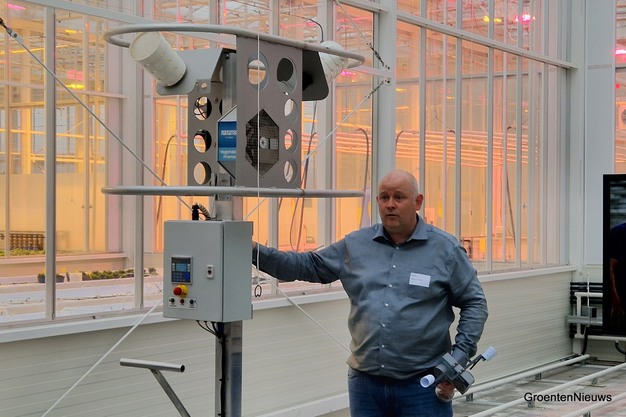
Maikel van Essen of Koppert next to the Natutec machine for deploying biological control agents in a high-wire cultivation
Harder Spraying Not Better
Maikel van Essen of Koppert also showcased techniques for breeding natural enemies. Next to him stood the Natutec, who also had scale models of the Airbug and the Airobug - all techniques for automating the deployment of biological control agents. Koppert also showed the Natutec Drive operational in strawberries. Maikel revealed that work is being done to combine Natutec and Natutec Drive. This would, for example, give a tomato grower access to a machine that can both spray and distribute biological control agents.
Optimal spraying is still a topic of discussion. Both Jeroen and Sergio discussed spray trials. Jeroen one for pepper, Sergio one for pot plants. They look at, among other things, the type of nozzle used, the spray angle, and the spray volume.
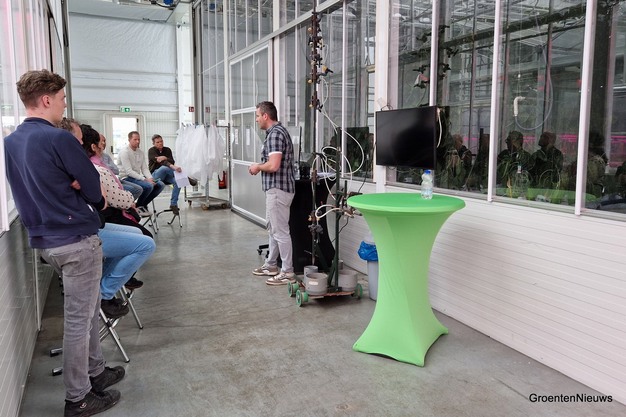
Jeroen from Vertify on spray trial in pepper
With simple adjustments, growers can improve the spray pattern. Growers can also experiment with other techniques that suit them the best. For example, measure with water-sensitive paper how deep into the crop you can reach after adjusting the pressure with which you spray. Spraying with 5 to 7 bar is 'more than sufficient,' Hans from Mertens dared to say based on his 24 years of experience.
The meeting could also count as a half-day for the extension of the spraying license, which a large part of the participants made use of. For the 'technique' part of your spraying license, as one of the participating growers said, a meeting like this is very useful. "You always learn something. Sometimes, especially because you get the chance to hear how other growers view things."
All presentations, including those from Van Iperen, Biobest, PATS, and Vertify, can be viewed here.










